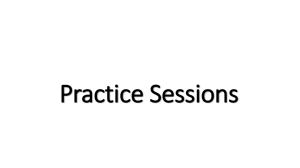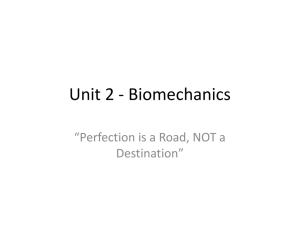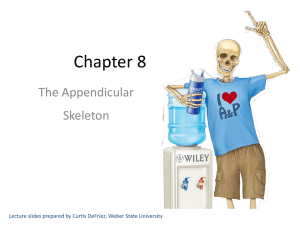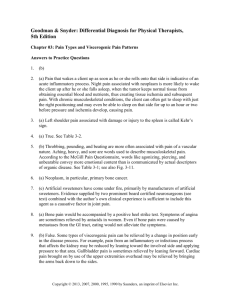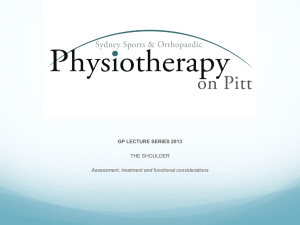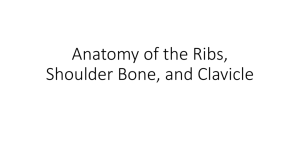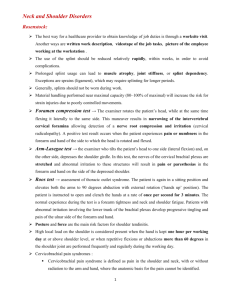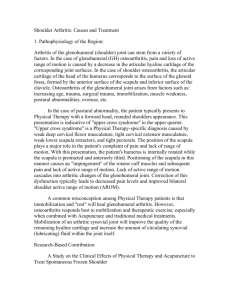Shoulder anatomy (MS Powerpoint)
advertisement
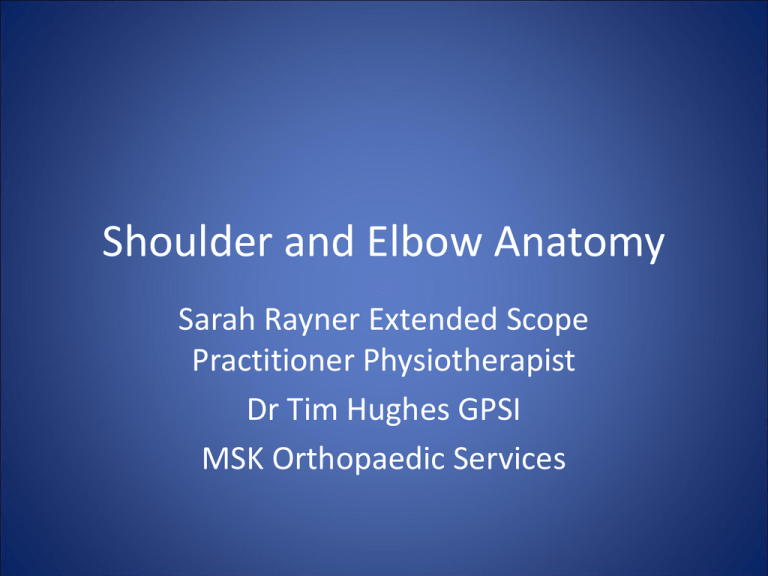
Shoulder and Elbow Anatomy Sarah Rayner Extended Scope Practitioner Physiotherapist Dr Tim Hughes GPSI MSK Orthopaedic Services Surface Anatomy • • Shoulder – Acromion (lateral border, post angle, ant edge) – AC joint line – Coracoid – Greater and lesser tuberosities – Insertions of supraspinatus, infraspinatus and suscapularis – Identify muscle bellies of supraspinatus, infraspinatus and teres minor – Outline of the scapula – C4 and C5 dermatomes Elbow – Head of the radius – Radio-humeral joint line – Ulner, median and radial nerve innervation of the skin – Lateral and medial epicondyles and common flexor and extensor origins – Insertion of biceps – C5/6 and 7 dermatomes Shoulder Anatomy With its 5 joints, 8 ligaments and 30 muscles, the shoulder complex presents a compromise between stability and mobility, and the result is that it is inherently unstable. Biomechanics of shoulder elevation • Humerus rotates about the scapula at the GH joint, the scapula rotates about the clavicle at the AC joint and the clavicle rotates about the sternum at the SC joint. • Normal movement required at all joints for full elevation to occur – efficient scapulo-humeral rhythm (Codman 1934). • Ratio GH to scapula movement 2:1 Shoulder Muscles • Scapula Pivoters – (Trapezius, Serratus ant, Rhomboids, lev scap) • Glenohumeral protectors – (RC & LHB) • Humeral positioners – (deltoid) • Power Drivers (Teres major, pec major and lat dorsi) Rotator Cuff Shoulder Summary • Shoulder complex movement occurs through the GHJ, ACJ, SCJ and scapula-thoracic gliding mechanism. • Anatomical structures and neural mechanisms control the Shoulder complex allowing smooth synchronised pain free movement. • Shoulder function is significantly dependent on normal biomechanics. • Failure of any component may lead to abnormal function of the shoulder complex. • Understanding biomechanics – successful assessment and treatment planning. Elbow Anatomy
